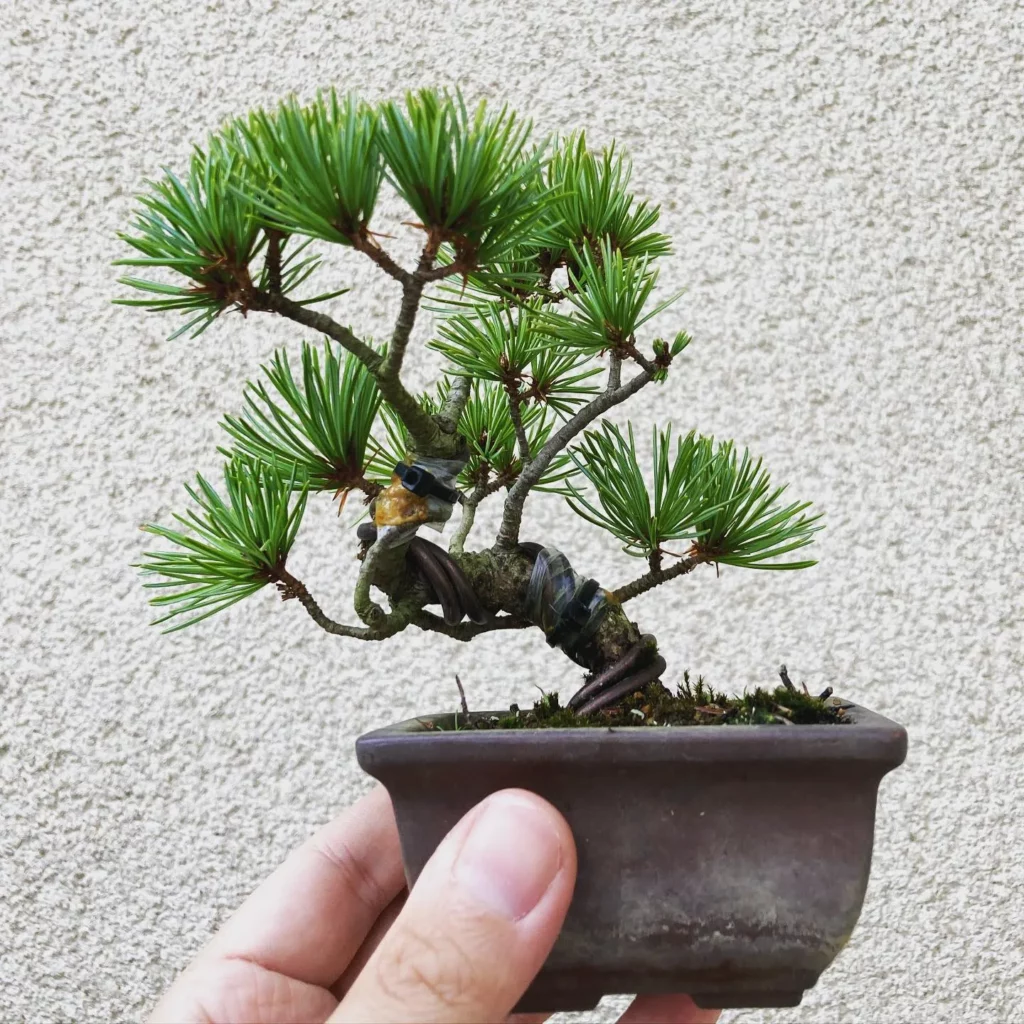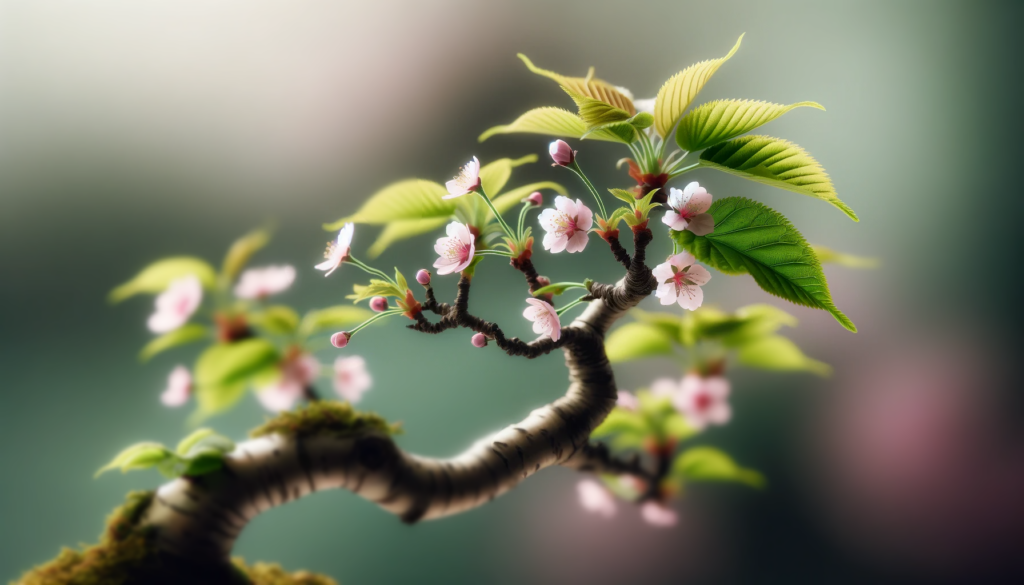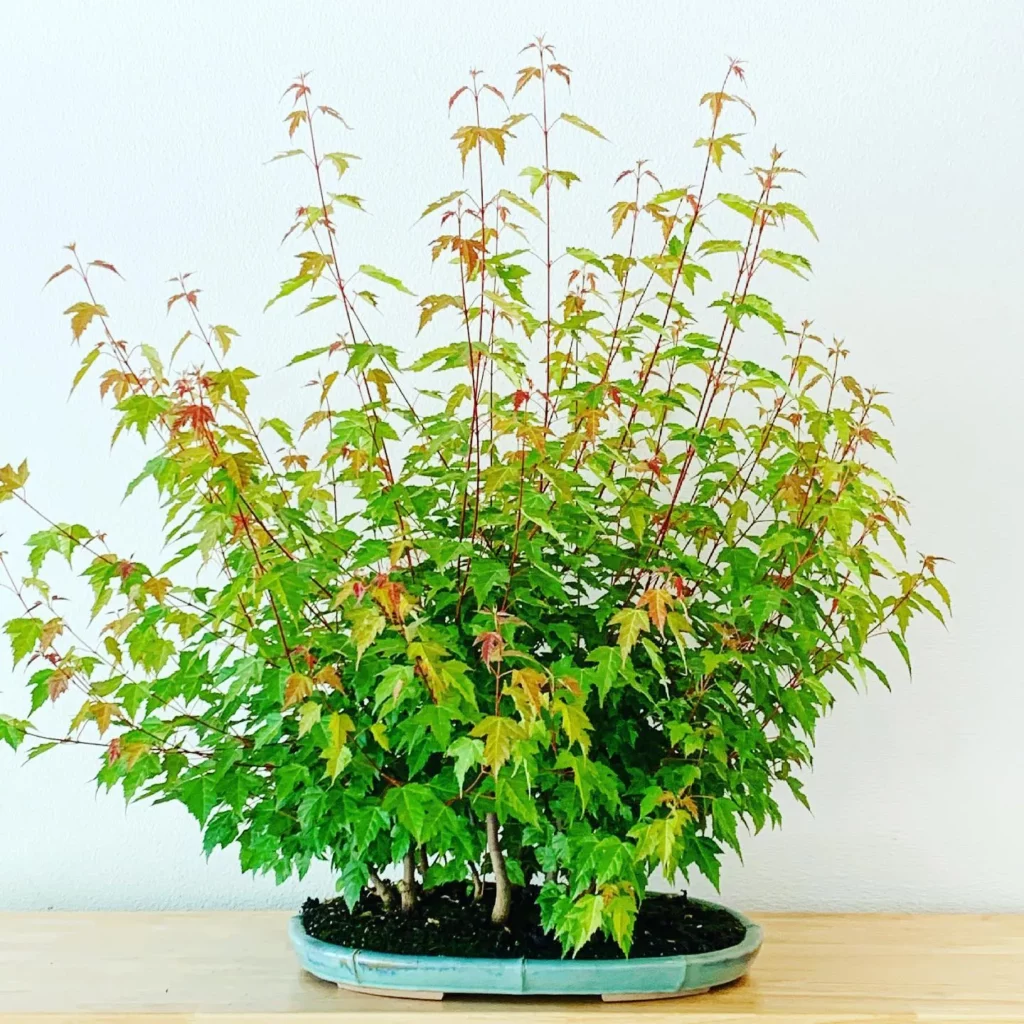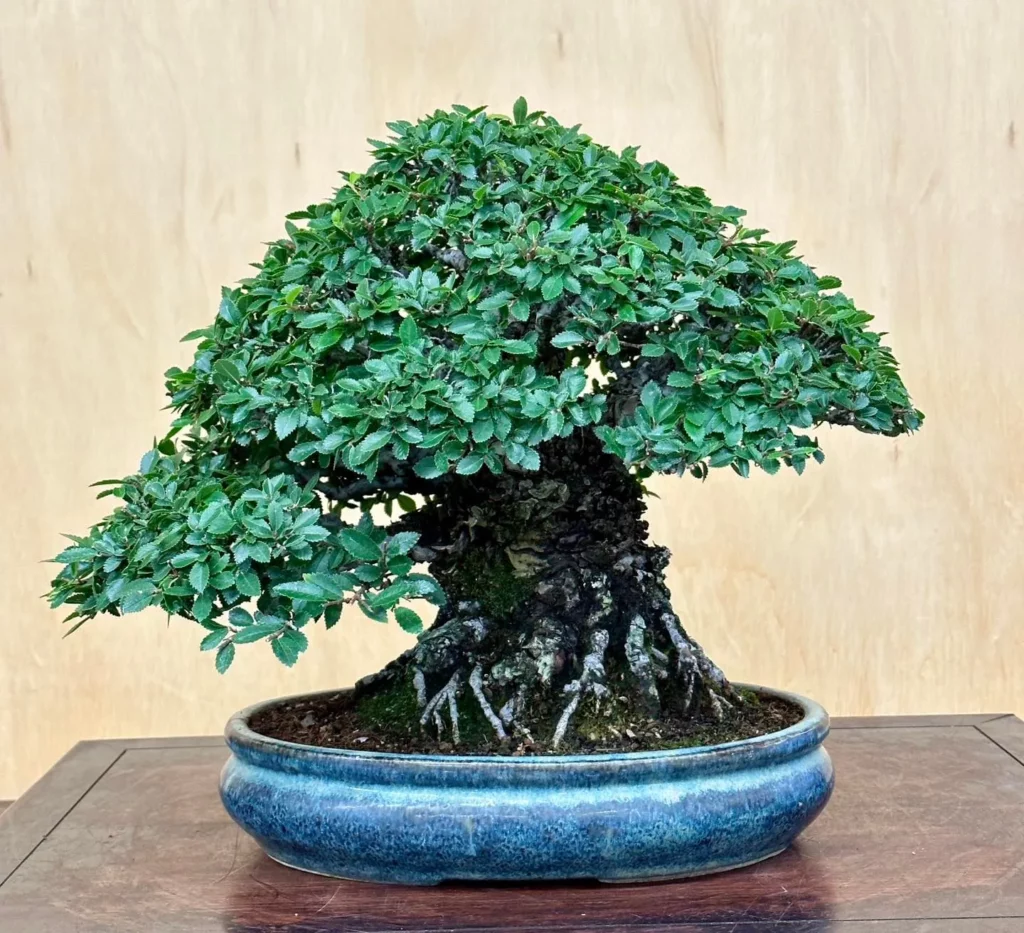When selecting high-quality bonsai trees to purchase, look for healthy, well-shaped foliage, a strong trunk, good branch structure, and an aesthetically pleasing pot that complements the tree.
Selecting the right bonsai tree is crucial for creating a captivating and thriving bonsai collection. Whether you are a beginner or an experienced enthusiast, there are key factors to consider when choosing a bonsai tree that will thrive in your care. By understanding these factors and paying attention to visual indicators of a healthy tree, you can make an informed selection that will bring beauty and tranquility to your home or garden.
Key Takeaways
- Consider the size of the tree and its placement to ensure it fits well in your desired location.
- Take into account the environmental requirements of the bonsai tree, such as light, temperature, and humidity.
- Assess your skill level and choose a bonsai tree that matches your expertise, whether you are a beginner or an advanced practitioner.
- Look for visual indicators of a healthy bonsai tree, such as well-distributed branches, vibrant green leaves, strong roots, and a smooth trunk.
- Explore different purchasing options, including large garden centers and specialized bonsai shops, both online and offline.
Factors to Consider When Selecting Bonsai Trees


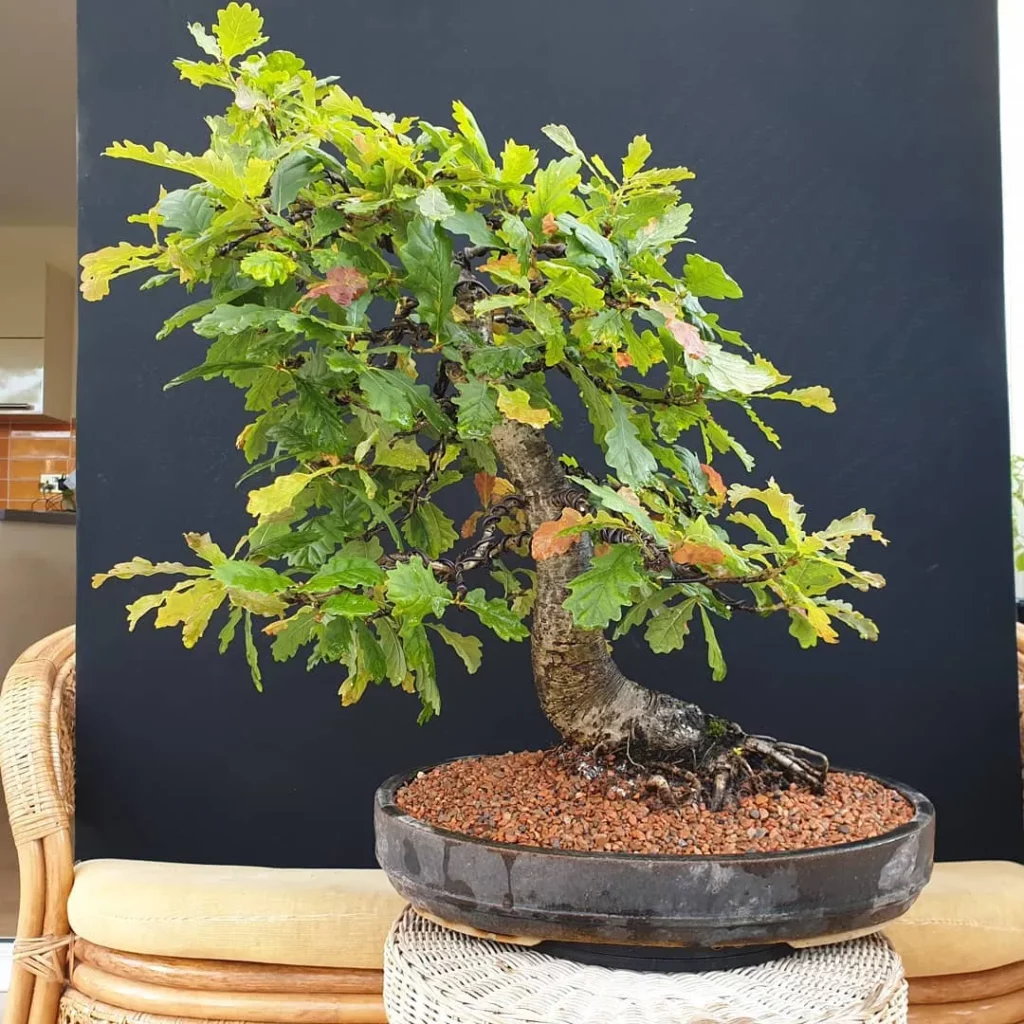
When selecting a bonsai tree, there are several key factors to take into account to ensure a successful and enjoyable bonsai experience. These factors include the size of the tree, the environment where it will be placed, the skill level required to care for it, and the visual indicators of a healthy bonsai tree.
Firstly, consider the size of the bonsai tree. Bonsai trees come in different sizes, ranging from tiny mame-sized trees to larger specimens. It is important to choose a size that suits your preferences and the available space. Smaller trees are ideal for indoor settings or limited spaces, while larger trees make a statement in outdoor gardens.
No products found.
Secondly, consider the environmental requirements of the bonsai tree. Some varieties thrive in full sun, while others prefer partial shade. Similarly, certain bonsai trees require specific temperature and humidity conditions. By matching the tree’s environmental needs with your living conditions, you can ensure its long-term health and vitality.
Next, consider your skill level and expertise in caring for bonsai trees. Some varieties are more forgiving and suitable for beginners, requiring less maintenance and specialized knowledge. Others, however, demand advanced techniques and experience to keep them thriving. Assessing your own abilities will help you choose a bonsai tree that matches your level of expertise.
Finally, when purchasing a bonsai tree, carefully inspect it for visual indicators of a healthy plant. Look for well-distributed branches, which indicate proper pruning and training. Vibrant green leaves are a sign of a tree in good health, while strong roots and a smooth trunk suggest a well-established and stable bonsai tree.
Size Considerations for Bonsai Trees
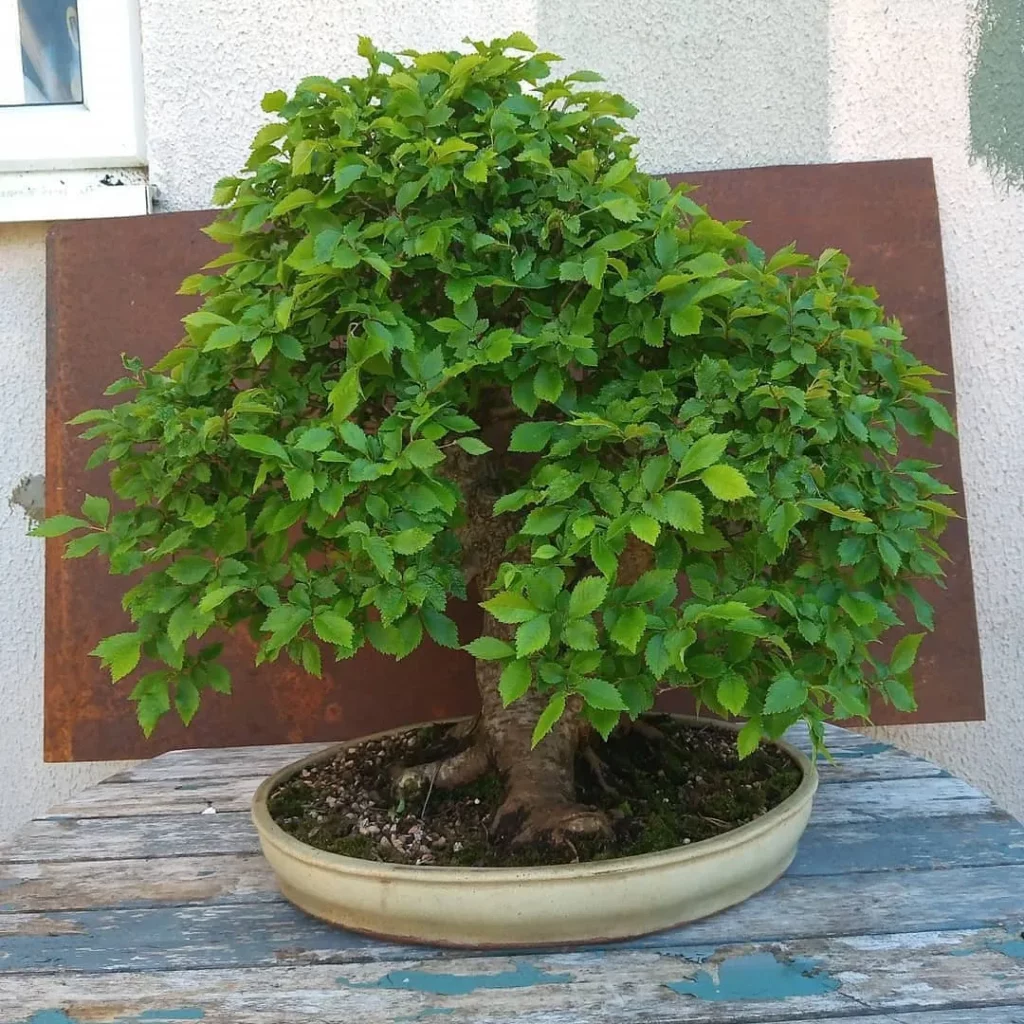
The size of a bonsai tree plays a crucial role in its aesthetic appeal and the level of care it requires. When selecting a bonsai tree, it is important to consider the desired size based on personal preference and the available space. Bonsai trees come in various sizes, ranging from small tabletop specimens to larger, more imposing trees. Each size offers its own unique beauty and challenges.
For beginners, it is generally recommended to start with smaller bonsai trees, as they are easier to manage and require less frequent pruning. The compact size also makes them more suitable for indoor display. However, if you have ample outdoor space and are willing to invest more time and effort into maintenance, larger bonsai trees can create a breathtaking focal point in your garden.
No products found.
It is important to note that the size of a bonsai tree is not solely determined by its height. The proportions of the trunk, branches, and foliage should also be considered. A well-balanced bonsai tree will have harmony between these elements, creating a visually pleasing composition.
| Bonsai Tree Size | Characteristics |
|---|---|
| Small | Compact size, suitable for indoor display, easier to maintain |
| Medium | Mix of indoor and outdoor display options, requires moderate care |
| Large | Dramatic presence, ideal for outdoor display, requires more maintenance |
Choosing the Right Size for Your Skill Level
When selecting the size of a bonsai tree, it is important to consider your skill level and the time you can dedicate to its care. Smaller bonsai trees are generally more forgiving for beginners, as they require less frequent pruning and are less demanding in terms of watering and fertilizing. As your skills and experience grow, you can progressively move on to larger and more challenging bonsai trees.
Environmental Requirements for Bonsai Trees

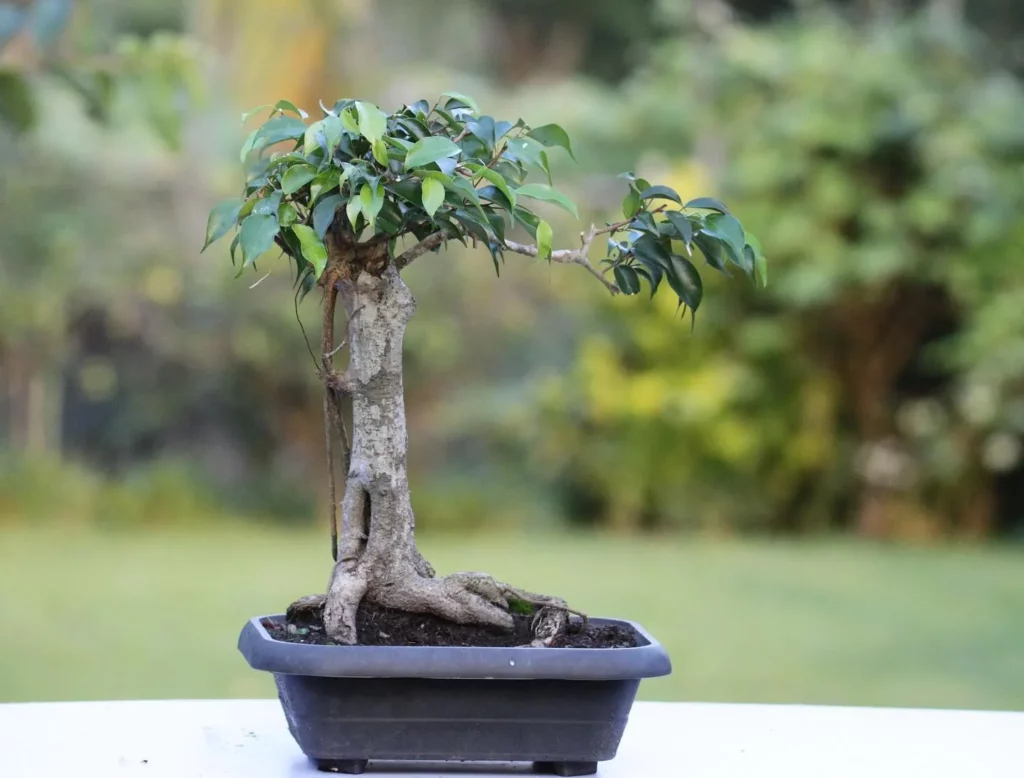
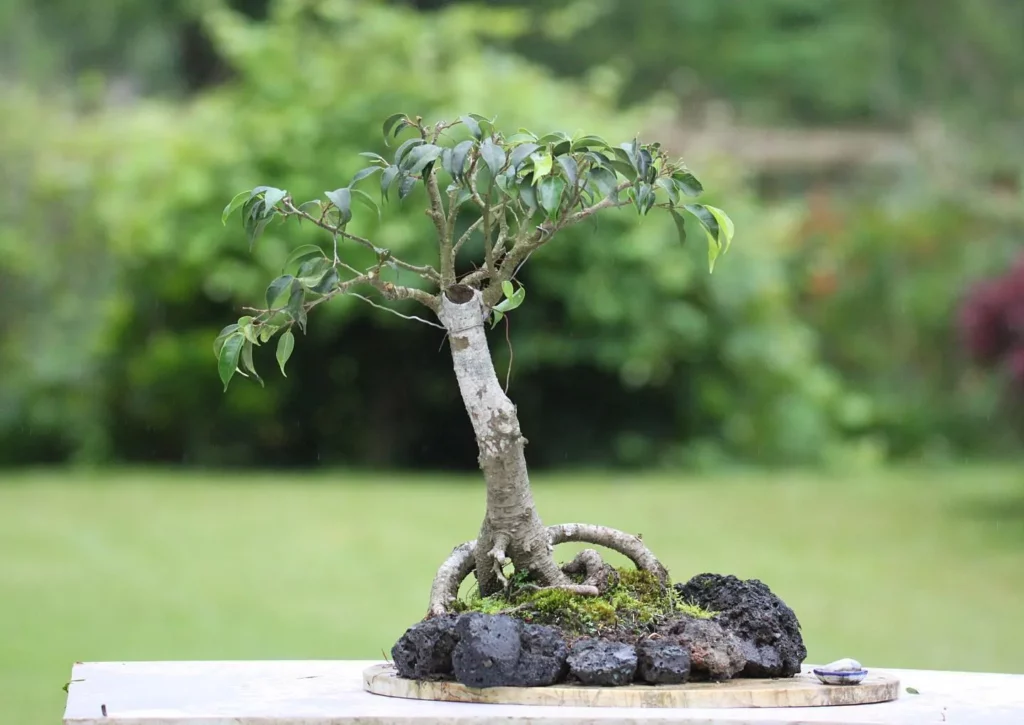
Providing the right environmental conditions is essential for the health and vitality of your bonsai tree. Each species of bonsai tree has specific requirements for light, temperature, and humidity, which must be carefully considered to ensure the tree thrives.
When it comes to light, most bonsai trees prefer a bright, but indirect, light source. Placing your tree near a window where it can receive filtered sunlight throughout the day is ideal. However, be cautious of exposing the tree to direct sunlight for extended periods, as it can lead to leaf burn.
In terms of temperature, bonsai trees generally prefer moderate conditions. Most species can tolerate a wide range of temperatures but should be protected from extreme heat or cold. It is important to find a location in your home or garden that provides a stable temperature throughout the year.
Humidity is another vital factor to consider. Bonsai trees thrive in humid environments, as it helps to keep their foliage lush and green. To increase humidity, you can place a tray of water near the tree or use a humidity tray. Avoid placing your bonsai tree near heating or cooling vents, as it can result in dry air and negatively impact the tree’s health.
| Light | Temperature | Humidity |
|---|---|---|
| Bright, indirect light | Moderate and stable | Increase humidity through water trays or humidifiers |
| Avoid direct sunlight to prevent leaf burn | Protect from extreme heat or cold | Avoid dry air from heating or cooling vents |
No products found.
Helpful Tips:
- Place your bonsai tree near a window for adequate light
- Protect your tree from direct sunlight to prevent leaf burn
- Find a location with a stable temperature throughout the year
- Increase humidity through water trays or humidifiers
- Avoid placing your bonsai tree near heating or cooling vents
Skill Level and Expertise Required for Bonsai Trees
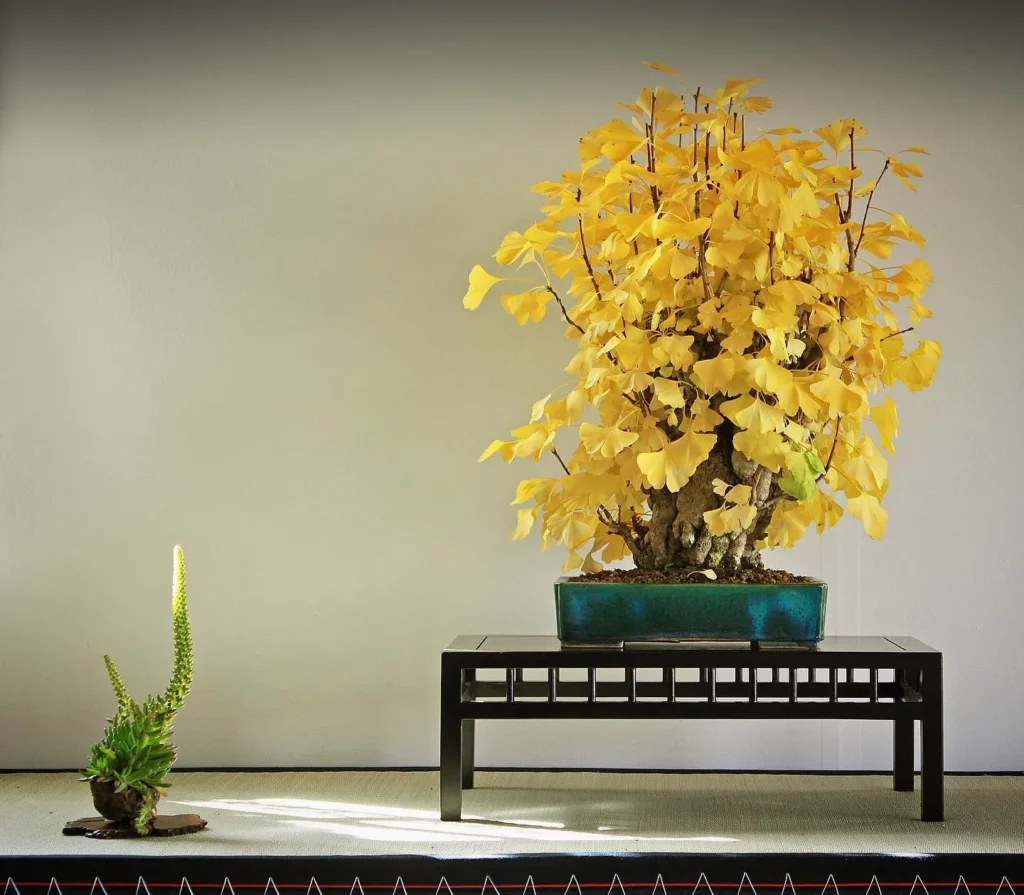
It’s important to choose a bonsai tree that aligns with your skill level to ensure a successful and rewarding bonsai journey. Different bonsai tree varieties require varying levels of expertise and care. For beginners, it is recommended to start with hardier and more forgiving bonsai trees, such as the Ficus or Jade tree. These varieties are more tolerant of beginner mistakes and can withstand a wider range of environmental conditions. Intermediate practitioners may opt for varieties like the Japanese Maple or Juniper, which require more specialized care but offer stunning visual appeal. Advanced hobbyists can challenge themselves with more delicate and demanding bonsai trees such as the Black Pine or Flowering Cherry.
When selecting a bonsai tree, consider your level of experience and commitment to maintenance. Research the specific care requirements of each variety to ensure you can provide the necessary attention and environment. It’s essential to be honest with yourself about your capabilities to avoid disappointment or frustration. Remember, bonsai cultivation is a lifelong learning process, and starting with the right tree for your skill level will set you up for success.
No products found.
Different skill levels and recommended bonsai tree varieties:
| Skill Level | Recommended Bonsai Trees |
|---|---|
| Beginner | Ficus, Jade, Chinese Elm |
| Intermediate | Japanese Maple, Juniper, Trident Maple |
| Advanced | Black Pine, Flowering Cherry, Japanese White Pine |
Visual Indicators of a Healthy Bonsai Tree



A healthy bonsai tree exhibits distinct visual characteristics that reflect its overall well-being and vitality. By understanding these indicators, you can confidently select a high-quality bonsai tree for your collection. Here are some key visual cues to look out for:
- Well-distributed branches: A healthy bonsai tree will have branches evenly spaced along the trunk, creating a balanced and harmonious appearance.
- Vibrant green leaves: Look for leaves that are lush and vibrant in color. Dull or discolored leaves may indicate a nutrient deficiency or inadequate care.
- Strong roots: Gently lift the bonsai tree from its pot to examine the roots. They should be well-established and evenly distributed throughout the soil.
- Smooth trunk: The trunk of a healthy bonsai tree should be sturdy and free from any major scars or deformities. It should have a smooth texture, indicating proper growth and development.
No products found.
| Visual Indicator | Significance |
|---|---|
| Well-distributed branches | Indicates a balanced and aesthetically pleasing tree structure |
| Vibrant green leaves | Reflects a healthy and well-nourished bonsai tree |
| Strong roots | Ensures the tree’s stability and ability to absorb nutrients |
| Smooth trunk | Shows proper growth and development of the bonsai tree |
Where to Purchase Bonsai Trees

When it comes to purchasing bonsai trees, there are several avenues you can explore to find the perfect addition to your collection. Whether you prefer the convenience of online shopping or the personal touch of an in-person experience, there are options to suit every preference.
Online options: Many reputable sellers offer a wide selection of bonsai trees online. Websites dedicated to bonsai enthusiasts, such as Bonsai Empire and Bonsai Outlet, provide a vast array of choices, catering to different skill levels and preferences. When purchasing online, it is important to read product descriptions carefully, paying attention to details about the tree’s size, species, and care requirements. Look for sellers with positive reviews and secure payment options to ensure a safe and satisfactory transaction. You can even find exclusive bonsai sellers on online marketplaces like Etsy or Amazon.
Offline options: If you prefer a more hands-on approach, visiting a large garden center or specialized bonsai shop can offer a unique shopping experience. Here, you can browse through a wide range of bonsai trees, inspecting each one up close to ensure its quality. Additionally, the knowledgeable staff can provide valuable advice and guidance, helping you make an informed purchase. Local nurseries or bonsai clubs may also organize bonsai tree sales or exhibitions, providing opportunities to connect with fellow bonsai enthusiasts.
No products found.
| Online Options | Offline Options |
|---|---|
|
|
Buying Bonsai Trees Online



Buying bonsai trees online can be a convenient and exciting way to expand your collection, but it requires careful consideration and research. When browsing through online options, it’s important to take note of the seller’s reputation and customer reviews. Look for sellers with a track record of providing healthy, high-quality bonsai trees.
Before making a purchase, thoroughly read the product descriptions and look for detailed information about the tree’s size, species, and care requirements. Some sellers may provide additional guidance or tips on how to care for the bonsai tree once it arrives. Make sure the online store offers secure packaging and reliable shipping methods to ensure the tree’s safe delivery.
When selecting a bonsai tree online, it can be helpful to compare prices and options across different websites. Take note of any promotions or discounts that may be available. Additionally, consider reaching out to the seller directly if you have any questions or need further information about a specific bonsai tree.
No products found.
| Advantages of Buying Bonsai Trees Online | Disadvantages of Buying Bonsai Trees Online |
|---|---|
|
|
Buying Bonsai Trees Offline
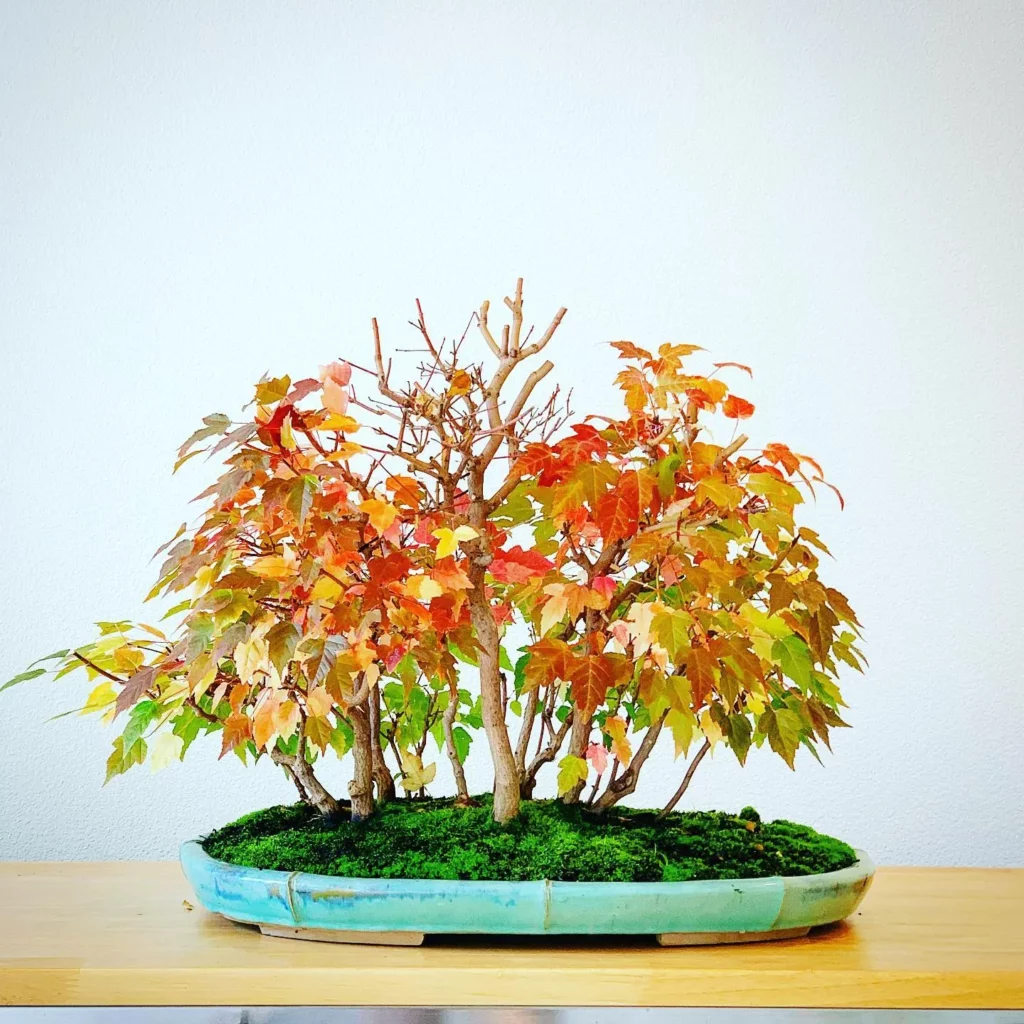
Exploring physical stores to purchase bonsai trees allows for a more hands-on and personalized experience. When visiting a garden center or a specialized bonsai shop, you have the opportunity to see the trees up close, touch their leaves, and assess their overall health. This tactile experience can help you make a more informed decision when selecting the perfect bonsai tree for your collection.
In addition to the sensory experience, visiting a physical store also allows you to seek guidance from knowledgeable staff members who can provide expert advice tailored to your specific needs. They can assist you in choosing a bonsai tree that matches your skill level and preferences, ensuring that you find a tree that you will enjoy caring for and watching grow.
Another advantage of buying bonsai trees offline is the ability to see a variety of options in person. You can compare different tree species, sizes, and styles side by side, evaluating their unique characteristics and identifying the one that resonates with you the most. This hands-on approach enables you to find a bonsai tree that truly captures your vision and aligns with your aesthetic preferences.
Don’t be afraid to take your time when browsing through the selection of bonsai trees in a physical store. Take note of the trees that catch your eye, consider their care requirements, and ask questions to ensure that you are making an informed decision. Once you have found the perfect bonsai tree, you can bring it home and begin the rewarding journey of nurturing and shaping it into a living work of art.
No products found.
| Advantages of Buying Bonsai Trees Offline | Disadvantages of Buying Bonsai Trees Offline |
|---|---|
|
|
Caring for Your Selected Bonsai Tree



Once you have carefully selected your bonsai tree, proper care is crucial to maintain its health and beauty. Bonsai trees require specific attention and maintenance to thrive in their miniature form. Here are some essential care practices to help you nurture your chosen bonsai tree:
- Watering: Bonsai trees need regular watering, but it’s important not to overdo it. Check the soil moisture regularly by inserting a finger about an inch deep into the soil. If it feels dry, it’s time to water. Use a gentle watering can with a narrow spout to avoid disturbing the delicate roots. Water thoroughly until the excess water drains out from the drainage holes in the pot.
- Pruning: Pruning is essential to maintain the desired shape and size of your bonsai tree. Use sharp, clean bonsai pruning shears to trim back any overgrown branches or foliage. Regular pruning also encourages new growth and helps maintain the overall health of the tree.
- Fertilizing: Bonsai trees require regular fertilization to provide them with the necessary nutrients. Use a balanced bonsai fertilizer during the growing season, following the manufacturer’s instructions for application. Avoid overfertilization, as it can harm the tree. It’s best to fertilize the tree after watering to prevent root burn.
- Addressing Common Issues: Keep an eye out for common issues such as pests, diseases, and nutrient deficiencies. Inspect your bonsai tree regularly for any signs of trouble, such as yellowing leaves, discolored spots, or unusual growth. If you notice any problems, take prompt action to address them. Consult with an experienced bonsai enthusiast or seek advice from a specialized bonsai shop if needed.
No products found.
| Care Practices | Frequency |
|---|---|
| Watering | Regularly, when the soil feels dry |
| Pruning | As needed to maintain shape and size |
| Fertilizing | During the growing season, following instructions |
| Addressing Common Issues | Regular inspection and prompt action |
Conclusion

Selecting high-quality bonsai trees is a fascinating and rewarding endeavor that allows you to cultivate both nature and art in your own living space. When choosing a bonsai tree, there are several important factors to consider. First, think about the size of the tree and where it will be placed. Different bonsai trees come in various sizes, so you’ll want to ensure the tree fits harmoniously in its designated spot.
Next, consider the environmental requirements of the tree. Some bonsai trees thrive in bright sunlight, while others prefer shaded areas. Additionally, temperature and humidity levels can play a significant role in the tree’s health and growth. Take these factors into account to create an optimal environment for your chosen bonsai tree.
Another crucial consideration is the expertise required to care for the bonsai tree. If you’re a beginner, it’s advisable to start with a species that is more forgiving and easier to maintain. As you gain experience and confidence, you can gradually move on to more advanced varieties. This way, you’ll be able to nurture your bonsai tree effectively and enjoy a successful experience.
When purchasing a bonsai tree, always inspect it for visual indicators of health. Look for well-distributed branches, vibrant green leaves, strong roots, and a smooth trunk. These are signs of a high-quality plant that will thrive under your care.
You can find a wide selection of bonsai trees at large garden centers or specialized bonsai shops, both online and offline. Consider exploring multiple options to find the perfect tree that matches your preferences and requirements.
Remember, caring for a bonsai tree is a long-term commitment. Ensure that you have the time, patience, and dedication to provide the necessary care and attention it deserves. With proper care, your bonsai tree will grow into a stunning piece of living art, bringing beauty and tranquility to your home for years to come.
FAQ
Q: What factors should I consider when selecting bonsai trees?
A: When selecting bonsai trees, it’s important to consider factors such as size, environment, expertise required, and visual indicators of a healthy tree.
Q: How do I choose the right size bonsai tree?
A: The size of the bonsai tree should be chosen based on personal preferences and experience level. Beginners may want to start with smaller trees.
Q: What are the environmental requirements for bonsai trees?
A: Bonsai trees have specific requirements for light, temperature, and humidity. It’s important to match these requirements with your living conditions.
Q: How do I know the skill level required for caring for a bonsai tree?
A: Different bonsai tree varieties require different skill levels. Some are suitable for beginners, while others are more suitable for intermediate or advanced practitioners.
Q: What visual indicators should I look for to ensure a healthy bonsai tree?
A: A healthy bonsai tree will have well-distributed branches, healthy green leaves, secure roots, and a smooth trunk.
Q: Where can I purchase bonsai trees?
A: Bonsai trees can be purchased from large garden centers or specialized bonsai shops, both online and offline.
Q: How do I buy bonsai trees online?
A: When buying bonsai trees online, it’s important to choose reputable sellers, evaluate product descriptions, and ensure safe delivery of the tree.
Q: How do I buy bonsai trees offline?
A: When buying bonsai trees offline, whether from a garden center or specialized shop, you can browse and select trees that meet your specific preferences.
Q: How do I care for my selected bonsai tree?
A: Caring for a bonsai tree involves practices such as watering, pruning, fertilizing, and addressing common issues. Proper care is essential for the tree’s health and longevity.


